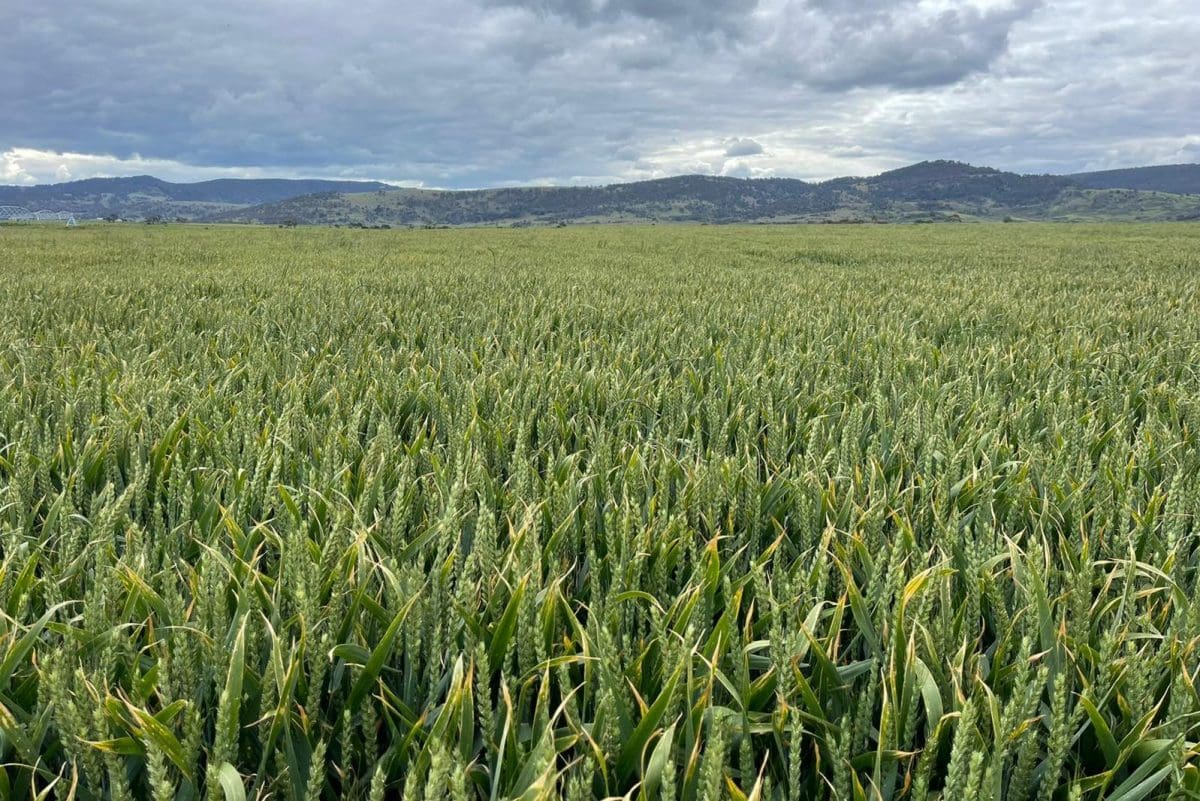
A wheat crop in north-east Tasmania’s Fingal Valley shows big yield potential and some rust as signs of a wet spring. Photo: XLD Commodities
A SPRING little different to the one being experienced over much of the mainland could well put paid to prospects for Tasmania to produce its biggest wheat crop ever.
The island state was forecast by ABARES in its September Australian Crop Report to harvest its biggest ever wheat crop of 87,200t from a record 16,000ha, up from last year’s record of 85,000t from 15,000ha.
Given the slow start for the spring crop, barley now appears unlikely to get to the 55,000t from 10,000ha forecast by ABARES, with area unchanged from last year, when 56,000t was harvested.
While canola may not get to the 10,800t from 5000ha forecast by ABARES, the Tasmanian crop is expected to break last year’s production and area records of 8000t from 3000ha.
Barley and canola both include some spring-planted area, and Nutrien Ag Solutions senior agronomist Central Midlands Andrew Legro said these have gone in up to one month late.
Disease has also been an issue in some waterlogged areas and, like their continental counterparts, delayed or prevented farmers top-dressing with fertiliser and application of fungicide at the ideal time.
“We’re copping it, but not quite to the extent of the mainland,” Mr Legro said.
“Some areas are shaping up to be very good, and some will be average.
“There’s been some very late spring barley go in in the past month.”
Potatoes are Tasmania’s big summer crop, and Mr Legro said low soil temperatures have made for a slow start for them as well as spring-planted canola and barley.
“Potatoes should all be in; they’re a month behind.”
Tasmania’s winter-crop harvest starts with canola around Christmas.
“All the canola is probably 4-5 weeks away from windrowing, and 5-6 weeks from direct harvest.”
Dry start, wet finish
While Tasmania’s winter crops were planted on time, follow-up rain was generally light and patchy.
“We were dry until August, and then it got wet.”
That impacted area planted to spring barley as a cash crop, and canola mostly for seed, with some being planted as late as mid-November.
Mr Legro said there had been “a lot of reworking” of agronomy plans since wet conditions arrived in August, with aeroplanes replacing ground rigs as the means to apply fungicide, a common theme in Victoria, New South Wales and Queensland in recent months.
“If it stays dry, we’ll have a half-reasonable season, and maybe a year a bit above average.”
Along with wet conditions making top-dressing difficult in many paddocks, Mr Legro said high fertiliser costs have limited grower preparedness to spend up big on nutrition.
Mr Legro estimates only around 10-20pc of Tasmania’s barley area is spring planted, and has gone in under boggy conditions.
He said yield prospects for winter cereals were generally above average.
“We could see dryland yields of 5-8t/ha for wheat and barley, and 8-10t/ha plus on irrigation.”
La Niña has also been felt in Australia’s highest cropping latitudes.
Easterly winds created by the La Niña weather pattern have brought above-average spring rainfall to the Midlands, and most of northern Tasmania, where the bulk of the state’s crops are grown.
This is in contrast to normal seasons, when westerlies bring soaking rain to Tasmania’s west coast, and make it harder for soaking rain events to douse the state’s eastern half.
Little change to imports
Tasmania annually imports a total of around 300,000t of mostly barley, oats, wheat and feed from the mainland.
Tasmanian Flour Mills is the state’s only large-scale flour mill, and general manager Darren Lee said his operation routinely imports the vast majority of its requirements from the mainland.
Mr Lee said South Australia now seemed to be the likely origin for the mill’s 2023 requirements, given its dryness relative to eastern states.
“Low falling numbers are usually a problem for our wheat: anything below 300 we can’t use for flour,” Mr Lee said.
“You can’t even blend it.”
Tasmania’s other volume grain users are the Skretting and BioMar aquafeed plants, and Tas Stockfeed, which supplies mixes and pellets for ruminants and monogastrics.

HAVE YOUR SAY